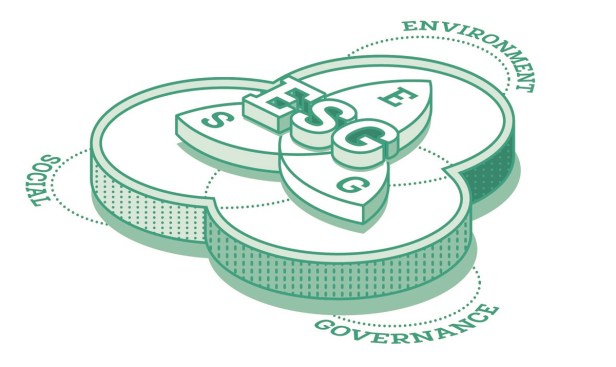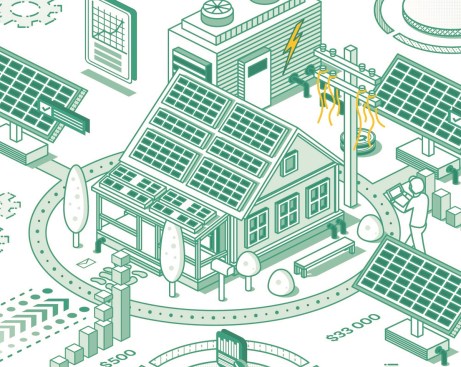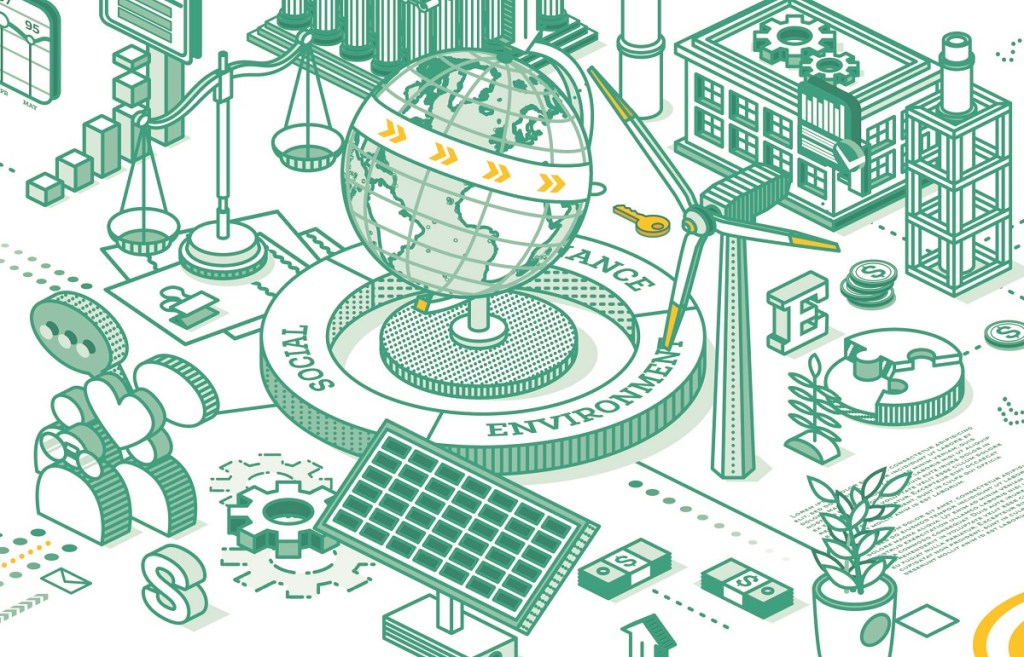What a difference a few years and a global pandemic make. When BUILDER last investigated the investor-driven focus on environmental, social, and corporate governance initiatives at public companies known as ESG in 2018, exactly one home building company—Meritage— had anything substantial to add to the conversation.
But at the time, even though the Scottsdale, Arizona-based home builder was starting to benchmark itself against the philosophy’s core metrics, it still hadn’t published its first ESG report, detailing its performance in each of the three areas the movement focuses on.
That wouldn’t come until November 2021, when the firm parlayed its experience issuing its annual corporate sustainability report every year since 2012 into a more formalized benchmarking of its achievements in its inaugural Environmental, Social and Governance Report.
The report highlights Meritage’s delivery of 10,603 Energy Star homes with an average Home Energy Rating System (HERS) Index score of 56; its diversity, equity, and inclusion strategic road map for its workforce; and the increase of gender diversity on its board to 22% with the addition of P. Kelly Mooney in March 2020, with eight of its nine directors being independent of the firm.
“We’re probably a little bit of a laggard in this space, honestly,” says Hilla Sferruzza, Meritage’s chief financial officer, referring to ESG reporting in the home building industry as a whole. “It’s really only the last 12 to 24 months that we, along with many of our peers, have started to publish these robust ESG reports.”
No Longer Just a One-Off Trend
To be sure, Meritage is hardly alone as an ESG-focused home builder anymore. Visit the websites of industry stalwarts such as Beazer Homes, Century Communities, D.R. Horton, K. Hovnanian, KB Home, LGI Homes, Taylor Morrison, Toll Brothers, and Tri Pointe Homes, and you’ll see a section on ESG highlighted either directly from the homepage or on the investor relations page.
That’s a far cry from 2018, when those firms were mostly mum on the subject. “Sorry, but we are not going to be able to help you out with this one” was the representative reply from one company’s investor relations department.
In contrast, home builders now are responding to the groundswell of attention ESG has garnered in the broader investing universe, fueled by the triple threat of climate change, social justice activism, and the pandemic.
Mike Stopka, a principal in the Chicago office of real estate consulting firm Buro Happold who advises clients on their sustainability efforts, says the term ESG has been trending among builders today, whereas few real estate pros were familiar with it previously.
“Five years ago, nobody was calling me about this,” Stopka says. Now, clients are dialing him up with urgent requests when equity and pension funds tell them they can’t commit any more capital unless they have an answer on the ESG front.
“Investors feel like they have to have a strategy for this, and so for real estate developers seeking that capital, in a way, it’s bubbling from the bottom up,” he says. “It’s become a bit of a buzzword.”
While home builders have focused on building energy-efficient and higher-performing homes for decades—a factor that seems ready-made for the “E” component of the strategy—that sense of urgency from investors is compelling them to formalize their ESG reporting now.
“It’s been a reaction to the investor community at large saying, ‘Hey, we need to start taking this more seriously,’” Sferruzza says. “The desire for sustainability is driving a lot of these initiatives.”
One-Third of All the Money in the World
As a result, a ton of money has flooded into the space. Globally, ESG-focused assets grew to approximately $35 trillion in 2021, a jump from $22.8 trillion in 2016, according to Bloomberg Intelligence, a 54% surge in five years.
That number is projected to grow to $53 trillion by 2025, reaching the nearly incomprehensible level of comprising one-third of all assets under management on earth.
The result, according to David Amerikaner, a member of the real estate practice group at Philadelphia-based law firm Duane Morris, is that home builders with an ESG focus are quickly outgunning those who lack one on the investment capital front.
“Home builders who benchmark, measure, and report their sustainability performance are able to tap ESG-focused investment more than other builders,” Amerikaner says. “More and more of the major builders are coming around to the inevitability of ESG in the industry.”

Adobe Stock/BooblGum
What ESG Is …
Typically, the money that’s pouring into the space screens its investments to ensure they meet predefined objectives aligned with the three legs of the ESG stool.
Those include the policies and processes companies use to run their businesses, the impact their actions have on the environment and society, and whether there’s diversity among board members and corporate executives, as well as transparency and clear reporting in corporate governance and operations.
The movement initially gained prominence in the early 2000s, particularly in Europe following a U.N. report on the topic in 2005, before taking hold in the U.S. in the last decade.
One defining catalyst for its assent here was the 2018 annual letter from Larry Fink, CEO of BlackRock, the world’s largest asset manager with $9.5 trillion under management, which put CEOs on notice that their actions needed to change.
“Society is demanding that companies, both public and private, serve a social purpose,” Fink wrote.
Now, four years later, it’s become a nearly compulsory box that corporations must check for investors, or at least supply evidence that they are ramping up to do so.
… And What ESG Isn’t
Given that evolution, the home building industry’s decadeslong rallying cry of improving the water, energy efficiency, and overall building envelope performance of the homes it produces seems like a natural fit for ESG, especially from an environmental perspective.
But as more home builders are finding out when they start down the ESG reporting road, the industry isn’t always viewed from the outside through the same green-building lens that it likes to apply to itself.
“Building new homes is a double-edged sword for ESG,” says Amerikaner. “On the one hand, new builds give an opportunity from the outset to reduce energy, water use, and greenhouse gas emissions. But at the same time, building homes is an inherently resource-intensive activity that involves carbon emissions, both from the construction itself and the transportation of materials.”
There’s also grown to be an alphabet soup of ESG benchmarking standards, from the Sustainability Accounting Standards Board (SASB) Index, the Global Reporting Initiative (GRI) Content Index, and the U.N. Sustainable Development Goals (SDGs), all of which Meritage used to index its own progress in its 2020 ESG report released last year. The Global Real Estate Sustainability Benchmark (GRESB), Morningstar’s Sustainalytics, and S&P Global’s ESG credit ratings are others.
Beyond that, according to Bloomberg, the total number of ESG benchmarks overall jumped 40% in 2020 alone. The result is a dizzying array of moving ESG targets for home builders to hone in on.
“In 2005, we were trying to explain LEED,” Stopka says. “That’s a similar situation to where we are with ESG right now. It’s still the Wild West.”
For Sferruzza, that often means trying to pick out whose criteria she’s trying to meet.
“It’s not like GAAP (generally accepted accounting principles), where when I put out financial statements, everyone knows what that means,” Sferruzza says. “We have a cross-reference table from three different rating companies, and we’re trying to meet all of their objectives, even though the objectives are sometimes conflicting. You end up asking yourself, ‘Who am I trying to make happy?’”
A 15-Year Legacy of Sustainability Reporting
When Los Angeles-based KB Home published its annual sustainability report on Earth Day 2022, it marked the firm’s 15th edition of the document that measures its impact on the environment and society, and examines the company’s corporate governance principles, a streak KB says is the longest for any national home builder.
The firm certainly has an enviable track record in building both energy- and water-efficient homes over the last two decades.
“As a home builder, we take pride in the fact that we are leading the industry in many ESG dimensions and have been recognized for our efforts,” says Dan Bridleman, KB’s senior vice president of sustainability, technology, and strategic sourcing. “When we began this journey, an energy-efficient, environmentally sustainable home was considered a luxury in home building.”
Indeed, the firm has been named to the America’s Most Responsible Companies list compiled by Newsweek for a second consecutive year, while also landing a spot on The Wall Street Journal’s Management Top 250 tracker and Forbes’ list of Best Midsize Employers.
Within the industry, the company has long been recognized as a leader in building high-performance homes. The company’s report captures, in part, KB’s legacy in the space so far, including these milestones reached in 2021:
► Built 160,000 Energy Star-certified new homes.
► Built 18,000 WaterSense and Water Smart homes, with over 900,000 WaterSense labeled fixtures.
► Implemented the new WaterSense Labeled Homes Program, Version 2.0—the first national home builder to do so.
► Achieved a national average Home Energy Rating System Index score of 49 (compared with 58 for all builders).
► Delivered 14,000th solar home.
“We believe that sustainability is built on one essential idea: balance,” Bridleman says. “We strive to ensure that today’s home buyers are able to achieve the dream of homeownership while balancing that objective with mindfulness about the sustainability needs of future generations and our environment.”
An ESG Credit Gap
And while builders often look at the end product of the more efficient homes they build today, organizations that measure the environmental impact of company operations often look at the impacts of the “manufacturing” process that goes into producing goods, homes included.
Take the viewpoint of S&P Global Ratings, which evaluates industries’ and companies’ ESG credit risks, based on their environmental, social, or corporate governance profiles.
“When we look at the home builders, specifically for environmental factors as a whole relative to other sectors, we consider them as moderately negative for ESG,” says Maurice Austin, associate director at S&P Global Ratings who covers the home building space. “You’ve got land-use issues, construction waste, pollution, water impacts, and noise pollution in terms of the heavy machinery needed to actually build the structure.”
Thus, while builders can be rewarded with investment dollars for articulating an ESG strategy, they can also be stung by the backlash that the increased scrutiny from the sector brings.
For example, the emphasis on the production process can be seen in S&P Global’s credit risk ratings for specific companies, but industries as a whole get painted with a broader brush.
Even though a firm like Los Angeles-based KB Home is widely regarded within the industry as a leader in energy efficiency and high- performance homes, a factor that helped land it on Newsweek’s annual list of America’s Most Responsible Companies, the firm’s ratings on S&P’s ESG scale put it squarely in the middle of the home building pack.
KB Home, like all the single-family builders in S&P’s ratings universe, is viewed as “moderately negative” for waste and pollution on the environmental front. Despite its superlative status within the industry, KB’s other ESG factors are rated as “broadly in line with that of industry peers,” according to S&P’s ratings.
At the same time, real estate companies that operate high-efficiency buildings after they’re built get a more favorable assessment. Multifamily operators such as AvalonBay, Equity Residential, and Camden Property Trust are viewed as either “moderately positive” for their governance practices or given a neutral score, even though the built environment is responsible for 30% of global carbon emissions and 40% of energy use, according to U.N. estimates. Single-family for-rent operators, who profit from the new houses home builders construct for them, also get a positive pass.
“They’re looking at the manufacturing cycle, not the actual product,” Sferruzza says. “I don’t make cellphones that you’re going to replace every two years. I build houses. There’s a huge impact to the environment of how well I build those houses. And that has to be addressed more.”
HERS Scores vs. Car-Centric Suburbs
Indeed, given the manufacturing mindset of ESG standards, some of home building’s own energy-efficiency benchmarks can be overlooked in the scoring process. Sferruzza and her team recently found themselves explaining what a HERS Index score is, the industry’s standard for energy efficiency, to one ESG rating organization.
“It’s an educational process for them to try to understand what it is we actually do,” Sferruzza says.
While home builders have focused on lessening their environmental impacts one house at a time, others say from an ESG perspective, they’re missing the forest for the trees.
“Energy use, the efficiency of water use, and the sustainability of the building materials is the lion’s share of what gets reported on from an environmental sustainability perspective for home builders,” says Jason Stanley, head of insights at Montreal-based real estate data intelligence firm Local Logic. “But if you’re building homes in the suburbs that aren’t close to public transportation, cars become central to how that household lives. Building homes outside cities implies a really unsustainable transportation pattern, and that’s being neglected in ESG reporting in the home building sector right now.”
Sferruzza counters that today’s suburbs aren’t the same as in earlier generations, where people drove 30 miles or more from a Levittown-like community to work in the urban core. “I think that’s a somewhat archaic perspective, because that assumes that people living in the suburbs work downtown,” she says. “I’ve been in Phoenix for 25 years and only worked downtown for three of them. Most jobs are not actually downtown in most of the areas where we build. Folks are living much closer to work than that.”

Adobe Stock/BooblGum
The Overhang of Entrepreneurial Legacy
Home builders can also be docked from an ESG perspective because many firms have an entrepreneurial origin story, which means they often still have ties to family founders, an aspect that can be viewed negatively from an independent governance perspective.
For example, S&P Global’s evaluation of Houston-based David Weekley Homes doesn’t have the same reverence for founder and chairman David Weekley’s ties to the firm that’s usually heard within the industry itself.
“Governance factors are … a moderately negative consideration based on our assessment of the company’s overreliance on a few key personnel,” S&P’s credit assessment for the company reads. “Although we don’t view the Weekley family’s involvement as detrimental to the company, we believe it could take self-advancing decisions such as dividend distributions, which it has done in the past.”
That kind of family involvement, a characteristic that’s common in home building, is posing ESG challenges for companies now.
“When you look at all the publicly traded home builders, my count is that there are only four companies where their founders, or the children of the founders, are not still involved in some way in the company,” says Carl Reichardt, home building analyst at New York financial services firm BTIG. “This industry, from a senior management perspective, hasn’t changed hands very much, which means having a very independent board of directors that doesn’t have a connection with the CEO or founder in some way is less likely.”
While that entrepreneurial spirit and family connection can be a badge of honor in home building, it’s viewed as a negative mark from the governance perspective of ESG.
Measuring ESG’s Measuring Stick
While home builders and ESG raters don’t see eye to eye on the criteria that should be used to evaluate them, they are of a like mind that better standards need to be developed.
For instance, at S&P, Austin says finding a uniform benchmark to measure home builders against has been a challenge in his own work.
“As we talk to the companies about their ESG initiatives, I don’t know if there is really a standard that we could use across the board to effectively compare all of the home builders,” Austin says. “As we get more home builders on board and get more information in terms of what they’re looking at, it will be easier to standardize some of those measurements and make a better comparison.”
At Meritage and other BUILDER 100 companies, executives are already working to do that. Sferruzza says that Meritage is one of about 10 home builders from the Leading Builders of America trade group whose investor relations departments are meeting to coordinate and present uniform standards for ESG in the home building industry. “We’re meeting regularly to figure out the best way to educate the raters to provide them with better data,” she says. “One great thing I would say is that the raters are very eager to learn and very excited for the engagement. So I have high hopes that over the next couple of years we’ll see some improvement there.”



